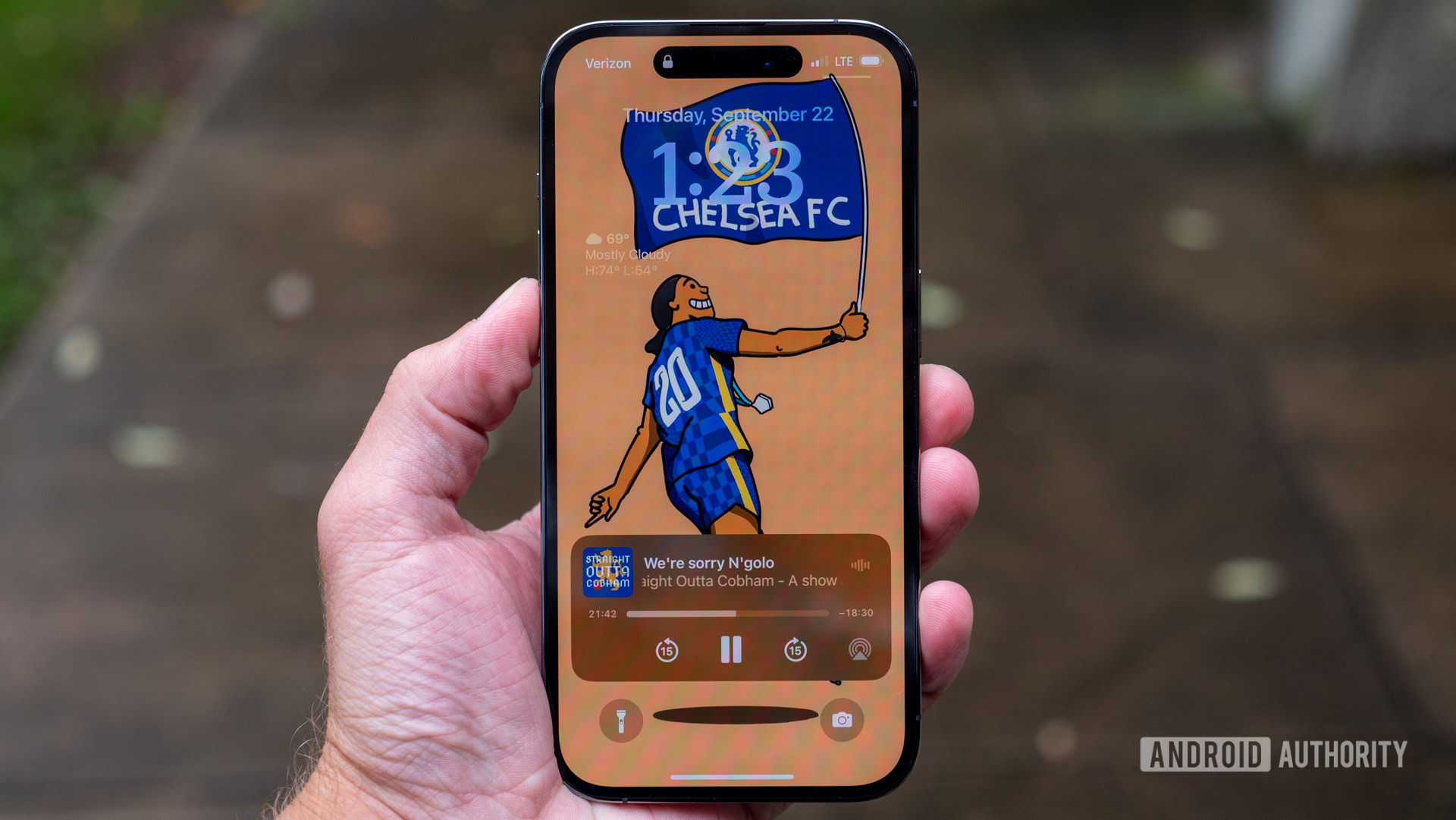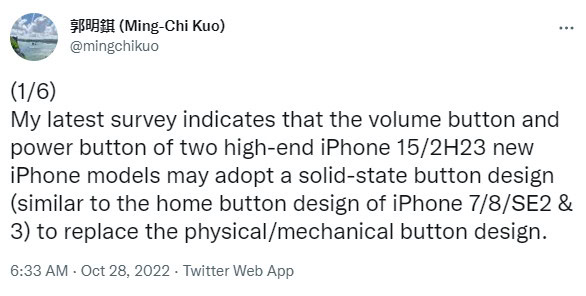Affiliate links on Android Authority may earn us a commission. Learn more.
The iPhone 15 series could ditch physical volume/power buttons
Published onOctober 28, 2022

- An Apple analyst has claimed that the iPhone 15 series could ditch physical volume and power buttons.
- Instead, the company might offer solid-state buttons akin to the iPhone 7’s home key.
Apple is no stranger to ditching physical inputs, as it previously ditched the 3.5mm port and physical home button. Now, a reliable source has claimed that the company might ditch physical volume and power buttons next year.
Veteran analyst Ming-Chi Kuo claimed on Twitter that Apple’s two high-end iPhone 15 models might adopt a “solid-state” button design for the volume and power buttons in lieu of physical buttons.
The Apple watcher specifically noted that this design would be similar to the home button design first seen on the iPhone 7 series, using so-called Taptic Engines (vibration motors). For the uninitiated, Apple abandoned the mechanical home button back in 2016. Instead, the company used a linear vibration motor to mimic a physical button press. Samsung would follow a similar approach with the Galaxy S8 series home button.
Solid-state volume/power buttons might not be a bad thing though, as it could make for a more reliable iPhone with fewer mechanical parts that can break over time.
Would you switch to haptic volume/power buttons?
However, it’s worth noting that the switch to solid-state home buttons might have ramifications for resetting the iPhone or entering recovery mode. We previously saw this with the iPhone 7 series, as Apple was forced to make power and volume the reset combo as opposed to pressing the power key and home button. This was because the software-based home button would also potentially freeze if the OS became unresponsive.
We’re guessing some Android OEMs would copy Apple if the company indeed decided to offer solid-state volume and power buttons. It wouldn’t be the first time we see Android brands ditch physical volume keys though, as the HUAWEI Mate 30 Pro and vivo Nex 3 both offered alternative solutions with varying degrees of success.
